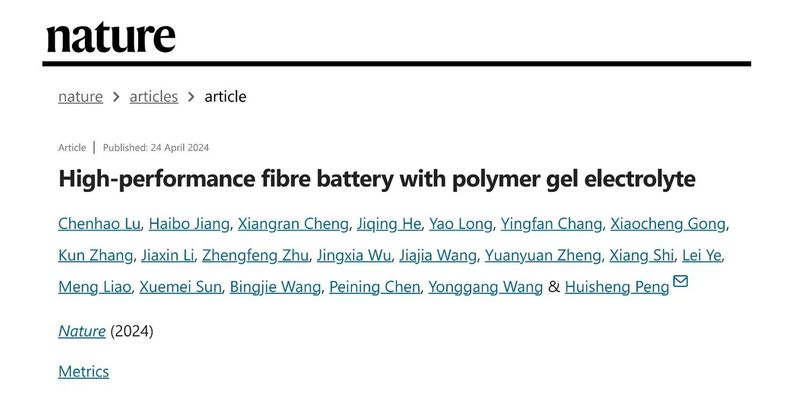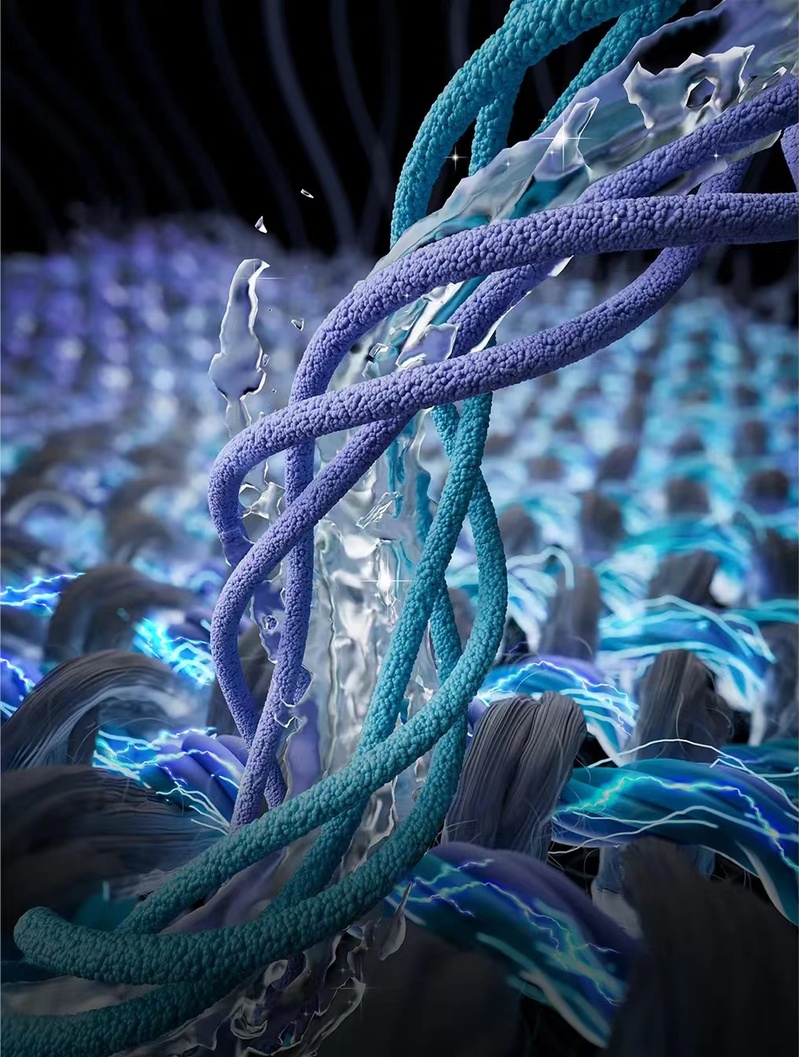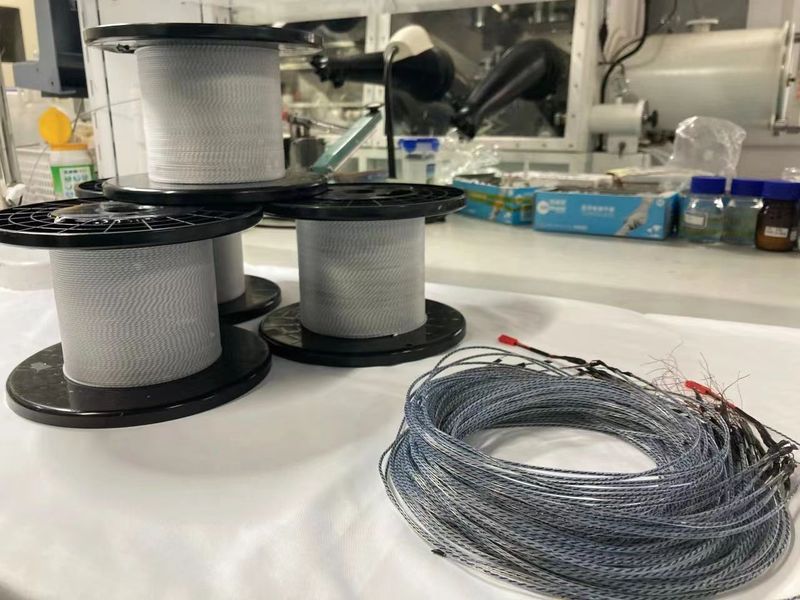Scientists at Fudan University in Shanghai have achieved a breakthrough in research on high-performance fiber batteries that could see people using their clothes and backpacks to charge mobile phones and watches.
They have designed samples of leather and canvas bags that look no different from ordinary ones but are embedded with the flexible fiber batteries. Jiang Haibo, a researcher on the team, said such a bag can wirelessly top up a mobile phone battery's charge by 20 to 30 percent in half an hour.

Such technology may also provide effective power for heated suits that could be used in winter, the researchers said.
They said bags and clothes with the fiber batteries can now be charged via wires or wirelessly and could possibly be integrated with solar energy in the near future, realizing the combination of energy storage and harvesting.
Peng Huisheng, a leading researcher in the study and an academician with the Chinese Academy of Sciences, said the team began working with flexible fiber lithium-ion batteries in 2008 and had solved a major problem in the latest study: how to use safe polymer gel electrolytes instead of the organic electrolytes commonly used in earlier fiber batteries.

Organic liquid electrolytes are flammable, leak easily and fail to meet the safety requirements for fiber batteries woven into textiles that have direct contact with people's skin.
It was considered difficult to replace the organic liquid electrolytes with polymer gel electrolytes, because polymer gel electrolytes are like jelly and easily slip off fiber electrodes. That meant they struggled to form a tight and stable contact interface with the fiber electrodes, resulting in low energy storage performance.

Peng got the inspiration for the breakthrough from creepers, which can be tightly and steadily wound around another plant. He studied why the two plants can be intertwined in such a perfect way.
The principle is that creepers secrete a liquid with good wettability, which penetrates into the pore structure of the contact surface between the two plants. The monomer in the liquid then polymerizes to glue the creeper to the other plant, entangling them tightly together.
In our study, we designed fiber electrodes with multi-level pore structures, and devised a solution to infiltrate into the pore structure, said Peng, who is a professor in Fudan's macromolecular science department and the corresponding author of a paper about the research that was published in the journal Nature on Wednesday.He said the solution they used undergoes a chemical reaction and forms polymer gel electrolytes that form a tight and stable interface with the fiber electrodes, thereby achieving both high safety and high energy storage performance.
All such difficulties conquered mean that we have pushed the boundaries in the research and development of flexible fiber batteries, paving the way to provide effective energy solutions in the fields of human-computer interaction, health detection and intelligent sensing, Peng said.
Tests showed that the fiber batteries' performance remains stable after 100 washing cycles and 10,000 abrasion cycles, as required by industry standards. Even after being bent 100,000 times, it can still maintain a stable power output.
A pilot production line has been built to make fiber batteries on a large scale. It can produce fiber batteries with an energy density of 128 watt-hours per kilogram that are capable of supplying energy for high-powered appliances such as drones.
The textiles have been shown in tests to supply power in a safe and stable manner to electrical appliances under high and low temperatures, vacuum environments and with external damage, giving them the potential to be used in important fields, such as fire and disaster relief, polar scientific research and aerospace, Peng said.
(END)
Presented by Fudan University Media Center
Source: China Daily writer Zhou Wenting





